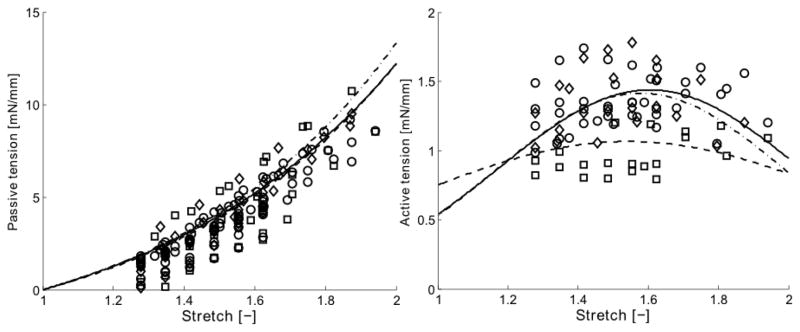Fig. 3.
Mean circumferential tension-stretch results in passive (left) and active (right) states for aortic rings subjected to three different loading histories: (○) n = 16 control vessels, (□) n = 8 vessels following 3 hours of adaptation at a low stretch, and (◇) n = 8 vessels following 3 hours of adaptation near the optimal value of stretch. The curves show functional behaviors resulting from the assumed exponential (passive) and Gaussian (active) type relations, given in equations 19 and 18, respectively, together with the mean best-fit model parameters given in Table 1. These behaviors are represented as: (–) for controls, (– –) following adaptation at low stretch, and (–·–) following adaptation near the optimal stretch. The contractions in the active tension-stretch plot were induced by 80 mM KCl and the adaptations occurred while stimulated with 2 μM PE (cf. Fig. 1).

